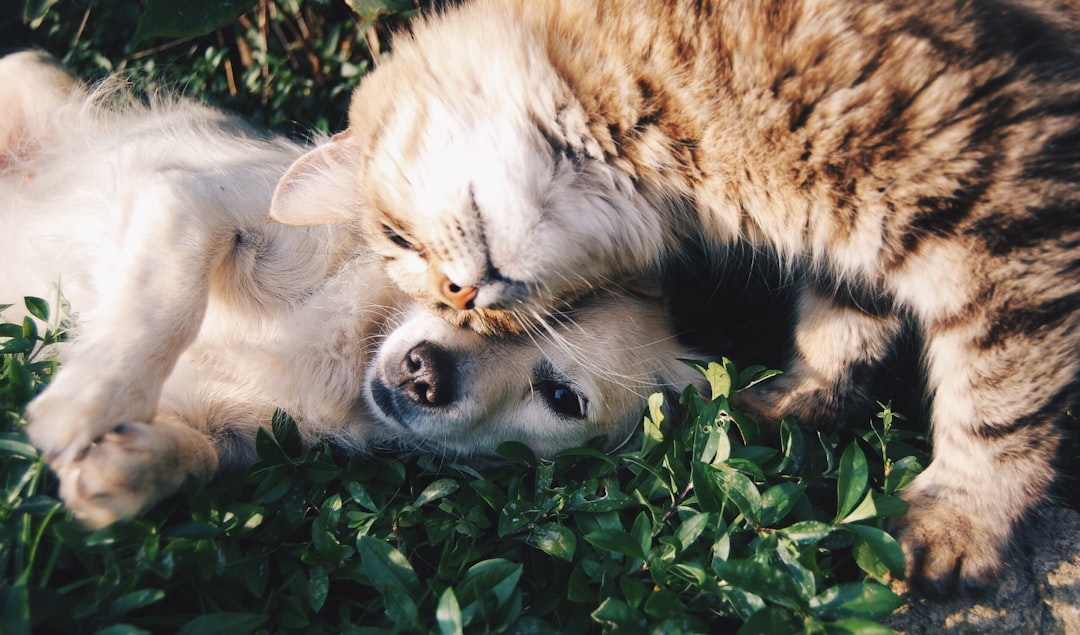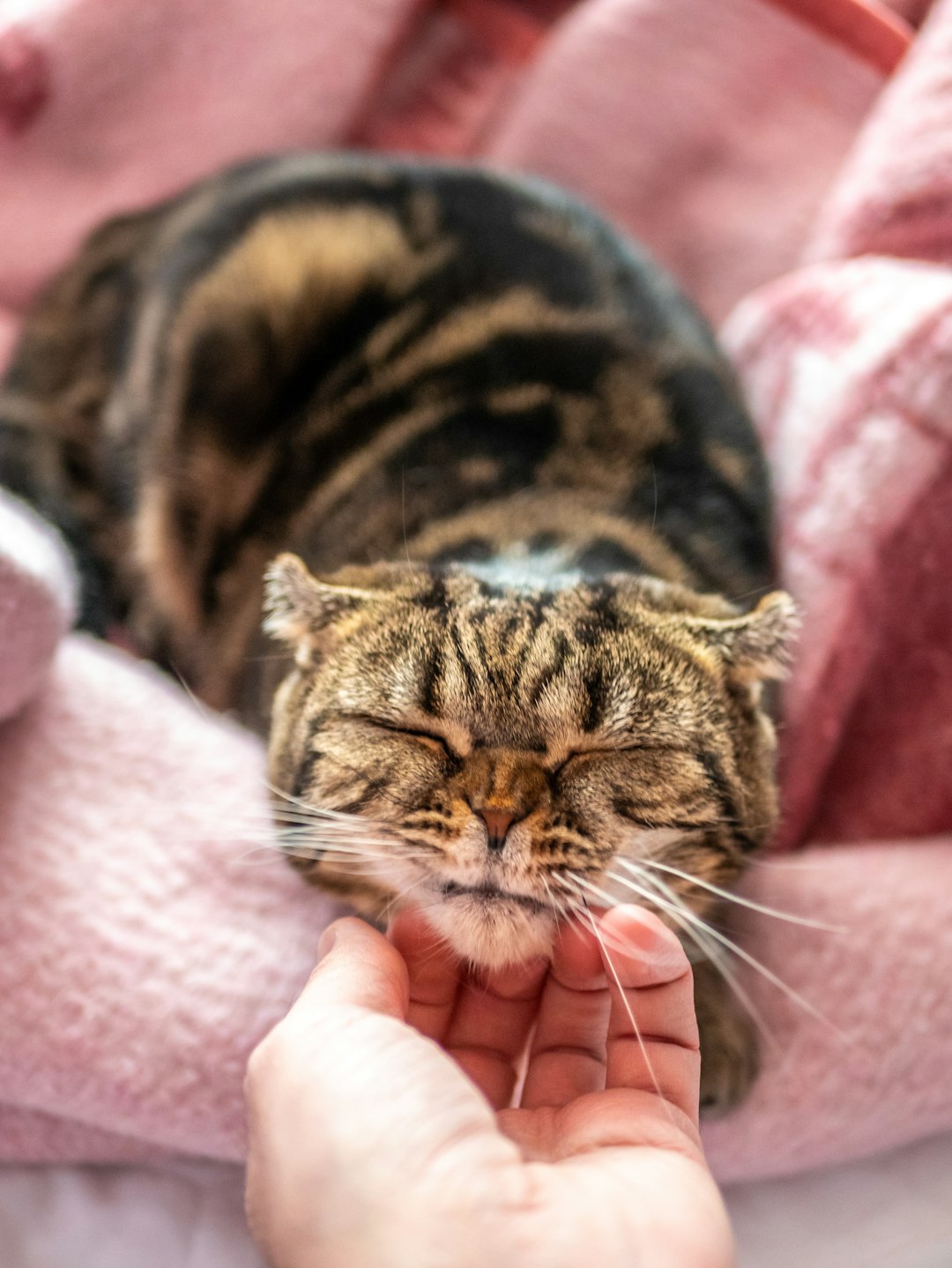When it comes to finding the perfect care for your feline friend, cat boarding presents a range of options tailored to meet various needs. With so many facilities available, it can feel overwhelming to choose the right one for your pet. Understanding the different types of boarding facilities, evaluating health and safety considerations, and knowing what to look for in a suitable environment can significantly impact your cat’s experience. Moreover, preparing your cat for boarding and considering socialization opportunities will help ensure a smoother transition. In this guide, we’ll explore everything you need to know about cat boarding to help you make an informed decision and ensure your beloved companion is happy and healthy while you’re away.
Understanding Cat Boarding
What is Cat Boarding?
Cat boarding refers to the service provided by facilities that offer temporary housing for felines when their owners are away. These accommodations are designed to meet the specific needs of cats, ensuring they feel comfortable and secure during their stay. Unlike traditional kennels, cat boarding facilities typically focus on creating a calm environment where cats can relax, play, and socialize as necessary. This dedicated approach often includes separate spaces for different types of cats, tailored activities, and attentive staff trained in feline care.
Benefits of Cat Boarding
Choosing cat boarding comes with various advantages, particularly for pet owners who need peace of mind while traveling. Here’s a concise overview of the key benefits:
| Benefit | Description |
|---|---|
| Safety | Facilities are designed to keep cats secure and protected from potential dangers. |
| Social Interaction | Many boarding options include playtime with other cats, which can enhance social skills. |
| Professional Care | Trained staff provides daily care, including feeding, grooming, and health monitoring. |
| Attention to Health | Regular health checks ensure that any issues are addressed promptly. |
| Less Disruption | Boarding reduces the stress of leaving cats in unfamiliar environments, such as with friends or family. |
Understanding what cat boarding entails and the benefits it provides is crucial in determining the best boarding solution for your feline companion. With the right facility, you can ensure your cat remains happy, healthy, and safe while you’re away.
Types of Cat Boarding Facilities
When searching for the ideal boarding solution for your feline companion, understanding the various types of facilities available is essential. Different boarding options cater to diverse needs and preferences. Here, we will explore two primary types of cat boarding facilities: Traditional Catteries and Home-Based Cat Boarding.
Traditional Catteries
Traditional catteries are specialized facilities designed exclusively for cats. They offer dedicated spaces for your pet’s comfort and care during your absence. Here are some key features of traditional catteries:
| Feature | Details |
|---|---|
| Environment | Enclosed spaces, sometimes with outdoor runs |
| Socialization | Cats may be kept apart or in small groups |
| Staff | Trained professionals supervise and care for cats |
| Services | Grooming, feeding, and health checks available |
| Security | Controlled access and surveillance |
Traditional catteries often provide a structured environment, which can be beneficial for cats that thrive on routine.
Home-Based Cat Boarding
Home-based cat boarding presents a more intimate alternative where your cat stays at the home of a caretaker or a pet sitter. This option can offer unique benefits, such as:
| Feature | Details |
|---|---|
| Personalized Care | Individual attention in a home setting |
| Familiar Environment | Some facilities offer in-home boarding |
| Flexible Schedule | Caretakers can accommodate specific needs |
| Less Stress | Familiar smells and surroundings reduce anxiety |
| Social Interaction | Opportunity to interact with other pets |
Home-based options are ideal for cats that require extra comfort and a homely environment, minimizing the stress of being away from their owners.
By evaluating these options, you can choose a cat boarding facility that best suits your furry friend’s needs and preferences.
What to Look for in a Cat Boarding Facility
When considering boarding options for your feline friend, several crucial factors come into play. Understanding these elements helps ensure a safe, comfortable, and enriching environment for your cat during their stay.
Facility Cleanliness and Safety
A clean and safe environment is paramount. Look for facilities that adhere to strict hygiene protocols. Check for:
| Criteria | Good Standard | What to Avoid |
|---|---|---|
| Cleanliness of Kennels | Daily cleaning and disinfecting | Dirty, cluttered spaces |
| Air Quality | Fresh, well-ventilated areas | Foul odors or poor ventilation |
| Safety Features | Secure enclosures; low noise levels | Sharp objects or unsafe materials |
Ensuring proper sanitation minimizes the risk of illness and creates a more welcoming atmosphere for your pet.
Staff Qualifications and Experience
A knowledgeable team is essential for providing high-quality care. Consider the following while assessing staff qualifications:
| Criteria | Recommended Qualifications | Red Flags |
|---|---|---|
| Training in Animal Care | Certification in pet care or veterinary assistance | Lack of training credentials |
| Experience with Cats | Several years in a boarding environment | Limited or no experience |
| Responsive to Needs | Staff should cater to individual cat personalities | Indifference towards concerns |
Well-trained staff can recognize stress signs, administer medications, and provide the necessary attention your cat deserves. Making an informed choice can greatly enhance your cat’s boarding experience.
Preparing Your Cat for Boarding
Accustoming Your Cat to New Environments
Preparing your cat for boarding involves familiarizing them with new environments to reduce anxiety. Start by creating a safe and comfortable space in your home. Use a quiet room, filled with familiar toys, blankets, and their usual food and water bowls. Gradually introduce your cat to travel carriers by allowing them to explore it at their own pace. Short car rides can also help them get used to moving in a vehicle, making the transition to a boarding facility smoother.
| Step | Description |
|---|---|
| Create Safe Space | Designate a quiet room for your cat with familiar items to reduce anxiety. |
| Explore Carrier | Let your cat investigate the travel carrier while rewarding them with treats. |
| Short Trips | Schedule brief car rides to help them acclimatize to travel. |
Essential Items to Bring
When it comes time to board your cat, bringing essential items will ensure their comfort and well-being. Make a checklist to include food, a favorite blanket, and any medication they may require. Additionally, consider packing interactive toys to keep them entertained. Label all items with your cat’s name to avoid mix-ups.
| Item | Purpose |
|---|---|
| Food | Keeps your cat on their regular diet. |
| Blanket | Provides comfort by bringing familiar scents. |
| Toys | Helps keep your cat engaged and reduce stress. |
| Medications | Ensures health needs are met during their stay. |
Taking these steps will not only ease your cat’s transition into boarding but also contribute to a stress-free and enjoyable experience for both you and your beloved feline.
Health and Safety Considerations
When it comes to leaving your furry companion in a cat boarding facility, ensuring their health and safety should be your top priority. Many factors come into play, which can significantly affect your cat’s well-being during their stay.
Vaccination Requirements
Before boarding your cat, it is essential to confirm that all vaccinations are up to date. Most facilities will require proof of the following vaccinations:
| Vaccination | Purpose | Frequency |
|---|---|---|
| Feline Panleukopenia | Protects against a highly contagious virus | Every 3 years |
| Feline Calicivirus | Prevents respiratory infections | Annual |
| Feline Herpesvirus | Ensures respiratory health | Annual |
| Rabies | Required by law in most regions | Every 1-3 years |
Having these vaccinations helps prevent the spread of diseases, safeguarding your cat and other animals in the boarding facility.
Emergency Procedures
Ensure the boarding facility has a comprehensive plan in place for handling emergencies. This includes:
- Access to Veterinary Care: Confirm the facility’s proximity to a veterinary clinic.
- Emergency Protocols: Investigate their procedures for medical emergencies, natural disasters, or sudden behavioral issues.
- Staff Training: Verify that employees are trained in first aid and pet CPR.
A reputable boarding facility will be transparent about their emergency procedures and will prioritize your cat’s safety. Therefore, inquire about these protocols to ensure peace of mind while you are away.
Socialization During Cat Boarding
Benefits of Interactions with Other Cats
Socialization can play a pivotal role in your cat’s boarding experience. Interactions with other cats can help alleviate stress, particularly for those who thrive in social settings. Engaging with fellow felines can result in improved overall well-being. Key benefits include:
| Benefits | Description |
|---|---|
| Reduced Anxiety | Cats may feel less anxious and more comfortable. |
| Physical Activity | Active play can promote fitness and alleviate boredom. |
| Behavioral Enrichment | Social play stimulates mental engagement. |
By fostering positive connections with other cats, your feline friend may return home happier and healthier.
Supervised Play Sessions
Play sessions are essential in any boarding setup, especially if they are supervised by qualified staff. Safe environments ensure that your kitty can interact without fear of conflict. Consider the following elements of supervised play:
| Features | Importance |
|---|---|
| Trained Staff | Trained personnel can manage interactions effectively. |
| Structured Activities | Regularly planned activities help maintain engagement. |
| Safe Environment | Ensures the safety of all participants during play. |
Supervised play sessions not only provide crucial social interaction for cats but also help them develop skills and refine behaviors, making the boarding experience beneficial overall.
Choosing the Right Cat Boarding Option
Selecting the ideal boarding option for your cat can be an overwhelming task, yet it is crucial for your feline’s comfort and well-being. Here are some essential factors to consider in making the right choice for your furry companion.
Evaluating Your Cat’s Personality
Understanding your cat’s personality is a fundamental step in selecting a suitable boarding facility. Different cats have varying temperaments, and their boarding experience may differ based on the environment. Assess your cat’s needs with the following points:
| Cat Personality Traits | Suitable Boarding Options |
|---|---|
| Shy or reserved | Private rooms in a quieter facility |
| Social and outgoing | Open play areas with supervised interaction |
| Senior or special needs | Facilities offering extra care and attention |
| Active and energetic | Spaces with climbing structures and toys |
Tailoring the boarding environment to your cat’s personality can significantly impact their stress levels while you are away.
Considering Your Budget
Budget plays a critical role in choosing the right boarding facility. Different options come with varying price tags influenced by several factors, such as amenities, location, and duration of stay. Here’s a quick comparison:
| Boarding Type | Estimated Cost Range | Features |
|---|---|---|
| Basic kennel | $15 – $30 per night | Standard accommodations |
| Luxury cat hotel | $40 – $100 per night | Spacious suites, enrichment activities |
| In-home pet sitting | $25 – $70 per visit | Personalized care in a familiar setting |
Evaluate your budget alongside your cat’s needs to determine the most suitable boarding option, ensuring that you find the perfect fit while keeping your finances in check.
Understanding Cat Boarding Costs
Average Pricing for Cat Boarding
When it comes to budgeting for cat boarding, understanding the typical price range can help pet owners make informed decisions. On average, the cost of cat boarding facilities varies significantly but generally falls within the following range:
| Type of Facility | Average Daily Cost |
|---|---|
| Standard Boarding | $20 – $30 |
| Luxury Boarding | $40 – $80 |
| In-Home Boarding | $25 – $50 |
| Veterinary Boarding | $30 – $60 |
These rates can fluctuate depending on location, type of service, and the amenities offered.
Factors Influencing the Cost
Several factors play a crucial role in determining cat boarding costs. Here are key components that can impact your expenses:
| Factor | Description |
|---|---|
| Location | Urban areas often have higher boarding costs than rural regions. |
| Amenities Offered | Facilities with toys, climbing structures, and personalized care may charge more. |
| Duration of Stay | Longer stays might lead to discounts, whereas short-term stays can incur higher daily rates. |
| Special Needs | Cats with specific health requirements may incur additional fees for specialized care. |
| Seasonal Pricing | Expect higher rates during holidays and peak travel seasons. |
By considering these factors, cat owners can better plan their budgets and select a boarding option that aligns with their financial considerations and their feline friend’s needs.
Reviews and Recommendations for Cat Boarding
Finding Reliable Reviews
When it comes to selecting the right cat boarding option, reliable reviews are essential. Check platforms such as Yelp, Google Reviews, and Facebook, where pet owners share their experiences. Look for facilities with consistently high ratings and detailed comments that reflect their services.
| Rating | Number of Reviews | Common Feedback |
|---|---|---|
| ★★★★★ | 200+ | Excellent care, clean environment |
| ★★★★☆ | 150+ | Friendly staff, good pricing |
| ★★★☆☆ | 70+ | Average facilities, limited playtime |
| ★★☆☆☆ | 30+ | Poor communication, unclean |
Reading multiple reviews can help you identify patterns. Focus on specifics like staff behavior, cleanliness, and whether the cats were happy and healthy upon return.
Asking for Recommendations
Another effective way to find suitable cat boarding options is by asking for recommendations. Start with friends, family, or your veterinarian, as they often have insights based on firsthand experience. Join online forums and social media groups dedicated to cat owners, as these communities can provide a wealth of knowledge.
To streamline your search, consider creating a short questionnaire for feedback, asking about:
- Quality of care: How did their cat fare during the stay?
- Facility environment: Were the areas clean, safe, and well-maintained?
- Staff interaction: How did the staff respond to cats’ needs?
This information will not only help you make a more informed decision, but it will also give you peace of mind when choosing the perfect cat boarding option for your furry friend.
Frequently Asked Questions
What should I consider when choosing a cat boarding facility?
When selecting a cat boarding facility, it’s essential to consider several factors. First, assess the cleanliness and hygiene protocols in place, as a safe and sanitary environment is crucial for your cat’s health. Visit the facility to observe how the staff interacts with the animals; well-trained staff should be attentive and caring. Check for amenities such as individual cat condos, play areas, and options for stimulation to keep your cat engaged. Additionally, review the facility’s policies on feeding, medication, and emergency care to ensure they meet your cat’s specific needs.
How can I prepare my cat for boarding?
To prepare your cat for boarding, start by acclimatizing them to their carrier by allowing them to explore it and spend time inside before the trip. This can help reduce anxiety. Gather essential items like your cat’s favorite blanket, toys, and any specific food or medication they may need during their stay. It’s also a good idea to schedule a visit to the boarding facility beforehand, if possible, so your cat can familiarize themselves with the environment. Lastly, consult your veterinarian about any additional advice or vaccinations required before boarding.
What are the benefits of boarding my cat instead of leaving them at home?
Boarding your cat offers several advantages over leaving them home alone. Being in a boarding facility provides social interaction with staff and other cats, which can help reduce feelings of loneliness and boredom. Professional boarding services also have tailored care routines, including monitoring health and offering regular meals and playtime. In contrast, leaving your cat at home may pose risks like inadequate food, lack of human interaction, or unnoticed health issues. Ultimately, a boarding facility can provide a safer, more engaging environment during your absence.
How do I find a reputable cat boarding service?
Finding a reputable cat boarding service involves researching various facilities and reading reviews from other pet owners. Start by asking your veterinarian for recommendations, as they often have experience with local boarding options. Next, consider exploring online pet care platforms that offer ratings and testimonials. Once you have a shortlist, visiting the facilities can provide insight into cleanliness, staff professionalism, and overall atmosphere. Don’t hesitate to ask specific questions about their procedures and policies to ensure your cat will be well taken care of.
What should I do if my cat has special needs or medical conditions?
If your cat has special needs or medical conditions, it’s crucial to communicate these requirements to the boarding facility before your stay. Ensure they have staff trained in handling specific conditions and administering any necessary medications. Provide detailed instructions regarding your cat’s care regimen, including feeding schedules and any behavioral concerns. It’s advisable to visit the facility ahead of time to discuss your cat’s needs and assess their preparedness to handle any situation that may arise.



